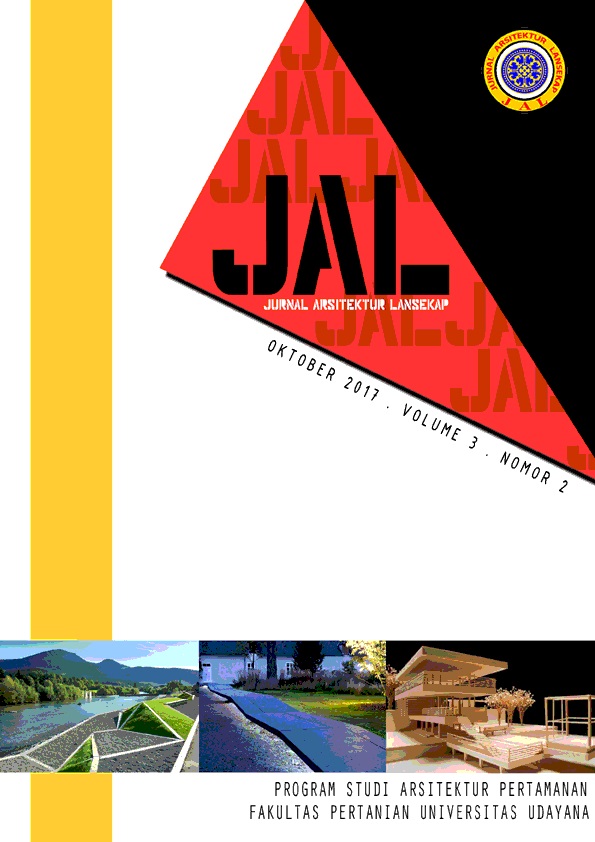Identifikasi Pola Ruang Taman Setra Di Desa Singakerta, Kecamatan Ubud, Kabupaten Gianyar, Provinsi Bali
Abstract
The background of this research is graveyard space pattern as Balinesse Traditional Garden very unique. The uniqueness of the pattern in every area is influenced by different customs in that area. This research is intented for identifying and describing the space pattern on every graveyard in Singakerta Village. The method which used survey with observation techniques, interview, distribution of questionnaires and literature review. Sampling technique used purposive sampling by choosing public figure on the six graveyard of Singakerta Village. The complements of hardscape in Graveyard Singakerta Village is prajapati, pamuhunan and grave area (genah mendem sawa) was found in every graveyard (100%), wantilan in 70 %, the other building in 33 %. The complements of softscape were found 47 types of plant, kepah and bila found in Tunon and Singakerta, kepuh found in Tunon, Singakerta, Semana, pule and beringin found in Tunon, Singakerta, Demayu, ancak or bodi, bunut bulu, keduduk, kemiri only found in Singakerta, anggih and kepelan found in Kengetan. The conclution of this research is the space pattern of graveyard is influenced by age combination, clan, caste and amount of banjar, desa kala patra, desa mawa cara and meta-ethic conceps.
Downloads
An author who publishes in the Jurnal Arsitektur Lansekap (JAL) agrees to the following terms:
- Author retains the copyright and grants the journal the right of first publication of the work simultaneously licensed under the Creative Commons Attribution-ShareAlike 4.0 License that allows others to share the work with an acknowledgement of the work's authorship and initial publication in this journal
- Author is able to enter into separate, additional contractual arrangements for the non-exclusive distribution of the journal's published version of the work (e.g., post it to an institutional repository or publish it in a book) with the acknowledgement of its initial publication in this journal.
- Author is permitted and encouraged to post his/her work online (e.g., in institutional repositories or on their website) prior to and during the submission process, as it can lead to productive exchanges, as well as earlier and greater citation of the published work (See The Effect of Open Access).
Read more about the Creative Commons Attribution-ShareAlike 4.0 Licence here: https://creativecommons.org/licenses/by-sa/4.0/.







